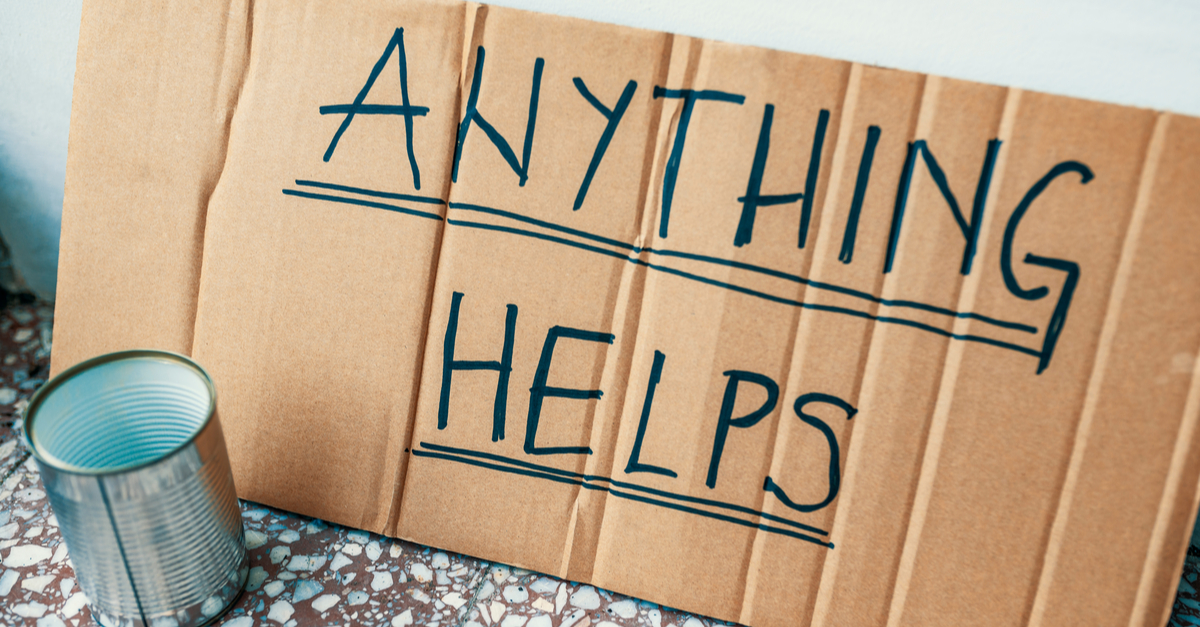What to Give the Homeless in the Summer: 10 Homeless Outreach Ideas Any season is a good season to donate time and resources for the local homeless community. Many people and organizations focus their homeless outreach efforts during the fall and winter, as the colder weather makes needs more apparent. However, providing support is just … Continue reading 10 Homeless Care Package Ideas for Summer
Lucky & Unlucky Pets
Pets can be expensive. The Tibetan Mastiff [...] has an average purchase price of $3,000, while the Portuguese water dog costs $2,500, and the Black Russian Terrier goes for $2,000. This, combined with the yearly cost of ownership—up to $1,843 on average for dogs and $1,035 for cats, according to the ASPCA—indicates most pet owners … Continue reading Lucky & Unlucky Pets
Give Me Shelter
Homelessness is not a modern phenomenon. The first cases of the homeless in America date back to the 1640s, according to Street News Service. Wars fought between the settlers and Native Americans displaced people on both sides. Back then, people would show up to a town and make a case for why they should be … Continue reading Give Me Shelter
Who is Helping the Kids Left Behind?
America now has 1,571,056 tax-exempt organizations, of which 1,097,689 are public charities, according to Urban Institute. [A]nother 105,030 [...] are private foundations, and 368,337 are [...] chambers of commerce, fraternal organizations and civic leagues. Nonprofits accounted for 9.2% of all wages and salaries [last year], 5.3% of U.S. GDP [and reported] $1.74 trillion in revenues. … Continue reading Who is Helping the Kids Left Behind?
The Poor Are Getting Poorer
Today, 83% of people living in poverty are either children, elderly, [disabled], students, [caretakers] or [the unemployed], according to The Washington Post. There are six million families with children living in poverty right here in the United States, [considered the] wealthiest nation in history, which means one in five families are living in poverty. For … Continue reading The Poor Are Getting Poorer
Surviving a Broken World
We just went through the season of celebration, but, really, is there anything to celebrate? There are hundreds of thousands of refugees crossing the Mediterranean and Aegean seas, fleeing war, persecution and violence in Syria, Afghanistan, Iraq and many other countries. The indiscriminate terrorist attacks killing 130 people in Paris were so senseless, as was … Continue reading Surviving a Broken World
Shouldn’t We Be Helping Those at Home First?
The United States spends $30 billion a year on official development assistance overseas, according to Oxfam America. [...] We have foreign aid [to protect] our national security with [the] hopes it will reduce [the] poverty and injustice that fuel social tensions and [destabilize] countries. It also helps with our own economic interests, because aid can … Continue reading Shouldn’t We Be Helping Those at Home First?
Cold & Forgotten: How We Can Help the Homeless
As we begin to enter [...] fall, [charitable] organizations like churches, the Salvation Army, the United Way and the American Red Cross are beginning [to finalize] their plans to help the homeless in their communities [through the winter]. This is a tradition that Americans have repeated for decades. Most cities and government agencies are making … Continue reading Cold & Forgotten: How We Can Help the Homeless
Death of Honor
This month is full of celebrations honoring our military. May 1 is Loyalty Day, which started in the 1920s to counter the rise of communism. [...] May 8 is V-E Day (Victory-in-Europe Day), which commemorates the end of fighting in Europe during World War II. Military Spouse Day is also on May 8 this year, … Continue reading Death of Honor
Shelters to Help Those in Need
According to [the] Metro-wide Engagement for Shelter and Housing, [...] it costs $32 [per day] for an adult and $125 [per day] for a minor to be in a shelter. On any given night, 600,000 Americans experience homelessness, of which 138,000 are children—[b]ut who ends up in these shelters? Americans needing shelters have a long … Continue reading Shelters to Help Those in Need
